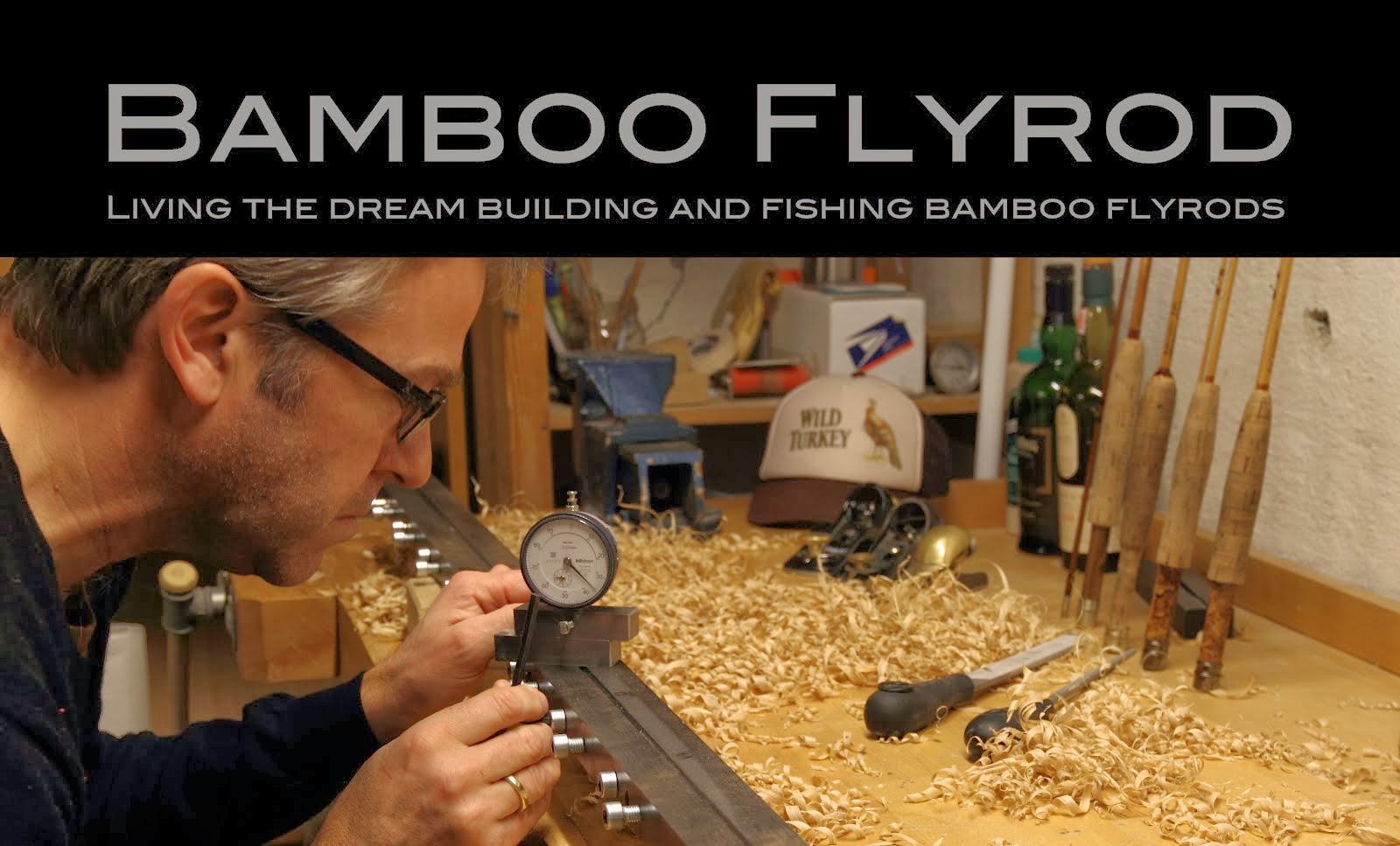The Garrison rod was indeed more powerful than it looked. Its moderately tapered grip, light straw color, transparent windings, and visible glue lines between strips all conveyed an image of functional austerity. Nothing went into the rod that did not enhance its performance. It was what you would expect from an engineering genius bent on creating the ultimate casting instrument.
Land of Little Rivers, 'Austin Francis
Another aspect of the pleasure which the building of bamboo fly rod brings, is the story behind the person that created the rod and the taper, like Everett Garrison. Garrison was one of the first I heard of that had something to do with the art of making bamboo fly rods, and that created my curiosity about bamboo fly rods and building of them.
Everett Garrison was born in Yonkers in the state of New York, grew up there and fished as a young boy in the the Esopus River and its tributaries situated in the legendary Catskill mountains . As a result of the
stock market crash of 1929,
and the subsequent depression that dragged on for almost a decade,
Everett Edmund Garrison lost his job as an electrical engineer with the
New York Central Railroad.
Several years earlier he had taken the suggestion from Anglers’ Club member Dr. George Parker Holden (The Idyll of the Split Bamboo - 1920), also living in Yonkers, that glued bamboo sections might be a satisfactory way to replace the hickory shafts in Garrison’s golf clubs.
Working with bamboo left a mark on the young engineer from Union College (1916) who ambitiously decided in 1932 to meld his childhood love of fly-fishing with the craft of bamboo rod making on a full-time basis.
Working full time at an engineering firm, building bamboo fly rods was limited to several hours after dinner and on weekends.
In 1933, ACNY president, Otto von Kienbusch, invited Garrison to give a talk in their clubrooms about bamboo rod building. He took twenty of his 8’0” two-piece models with him, and before the lights were turned out that evening, every rod was sold save for one. And after that his bamboo rods grew in popularity and many wanted one of his rods.
Before his death Everett Garrison made well past 600 rods.
(Thanks to Hoagy B. Carmichael for sharing the picture and info.)
The book - A Master's Guide To Building A Bamboo Fly Rod, by Everett Garrison & Hoagy B. Carmichael was the first book I bought about building bamboo fly rods. I read the book from start to finish, to learn how to start my adventure to build my first bamboo flyrod. However it would go five winters before I built my first Garrison. There were several reasons for that but one of them was that I had heard that the tapers Garrison used was not so exciting as others.....
Well, there they were wrong. Having built my first Garrison a mod 209 - 7'6 "5 wt, threw a lot with it and got several nice trout, it is the rod that has become one of the favourites when I'm out fishing.
When I'm building copies of the rods to the old masters, it's fun to make the same cork handle and use similar stripping guides and silk that they used. A Garrison rod has the bamboo's natural colour. Rod windings are white silk that becomes transparent when varnishing. Ferrules has chocolate brown windings, the handle has a shape which is almost straight and ends with Garrison's standard cork skeleton reel seat. No detail was to distract attention from the golden yellow colour of the bamboo and the nodes, a typical proof of the expression-less is more.
Garrison mod 209 with its wonderful action was a dream to cast and catch trout with. Here is two of several trout's from the last trip.
I'm curious about several of the rods that Garrison made, so I will probably build a new one the upcoming winter.
Some pictures for dark winter nights.
 It's October and the forests are turning shades of orange and cranberry and gold. This year's trout season will soon be over. The temperature has already been well below zero several nights......so it's time for a glass of single malt and pick up the book I'm now reading for the fourth time .... a book that put me in the proper mood every fall before I start building this seasons bamboo flyrods.
It's October and the forests are turning shades of orange and cranberry and gold. This year's trout season will soon be over. The temperature has already been well below zero several nights......so it's time for a glass of single malt and pick up the book I'm now reading for the fourth time .... a book that put me in the proper mood every fall before I start building this seasons bamboo flyrods. 

























